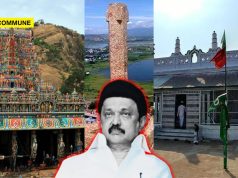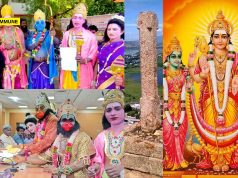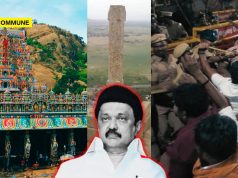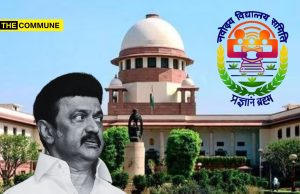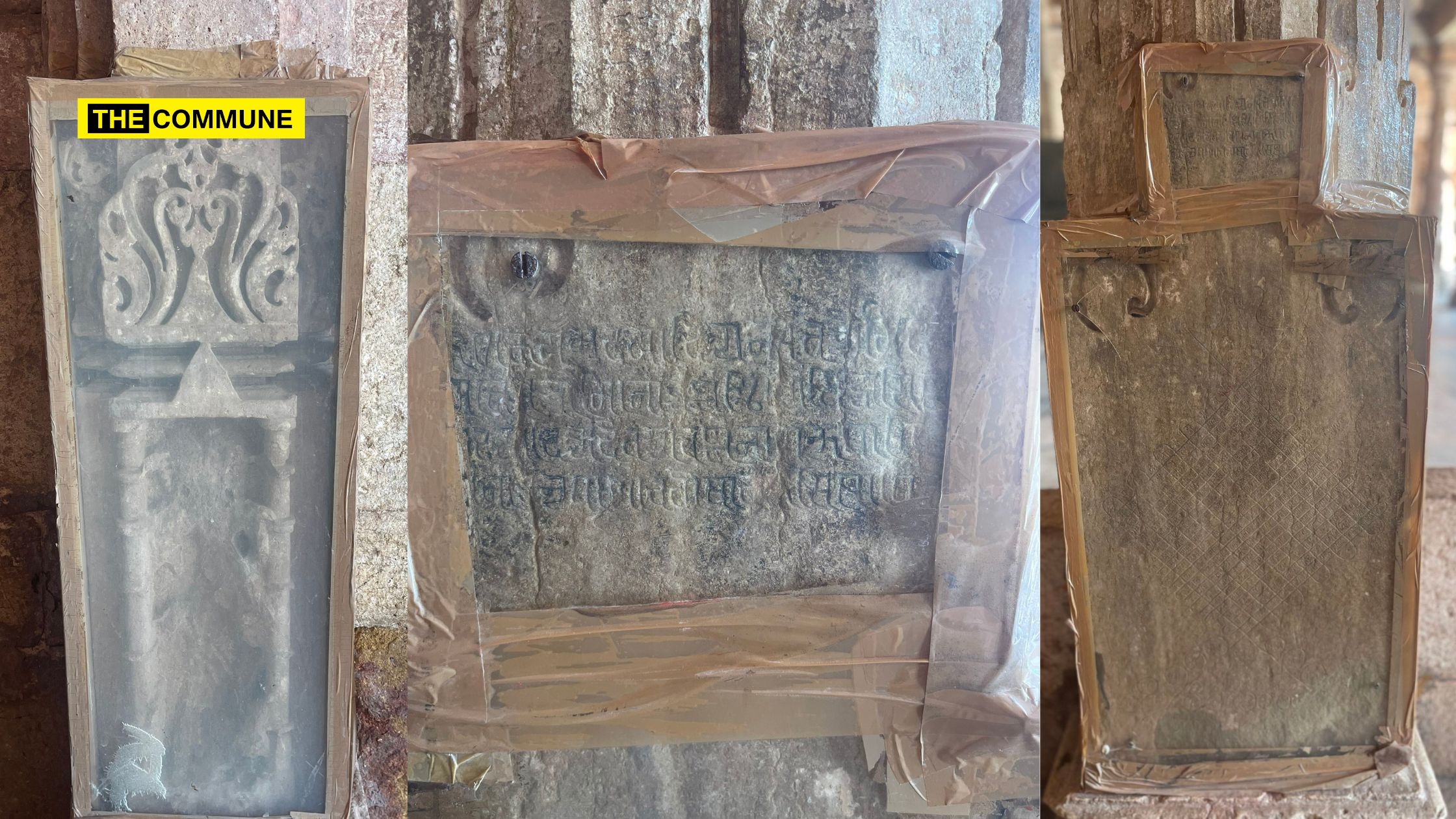
The shocking state of a temple under the Archaeological Survey of India (ASI) has come to light. Temple activist Shefali Vaidya recently shared on her social media X handle, the apparent apathy towards Hindu monuments by the Archaeological Survey of India (ASI). The heritage site in question was the 1000-year-old Bhojshala in Dhar.
Vaidya highlighted the stark contrast in ASI’s expenditure, questioning why crores of rupees were allocated annually to illuminate Mughal tombs in Delhi, while a 1000-year-old heritage site in Bhojshala, Dhar, suffers from neglect.
Vaidya expressed her dismay at the use of cheap glass and Scotch tape as makeshift protection for the ancient inscriptions and carvings in Bhojshala. This raises serious concerns about the preservation of invaluable Hindu heritage, as such ad-hoc measures are hardly fitting for the safeguarding of culturally significant artifacts.
Dear @ASIGoI, every year, you spend crores of rupees on ‘lighting up’ Mughal tombs in and around Delhi. Do you NOT have even a few thousands to properly protect 1000 year old inscriptions and carvings in #Bhojshala of #Dhar? I was appalled to see cheap glass covering old… pic.twitter.com/JqzAiWvoEQ
— Shefali Vaidya. 🇮🇳 (@ShefVaidya) February 19, 2024
The Bhojshala
The Bhojshala is a historic building situated in Dhar, Madhya Pradesh, India. Its name is inspired by King Bhoja, a revered figure from the Paramāra dynasty in central India. King Bhoja was a notable supporter of education and the arts, credited with the authorship of significant Sanskrit works on poetics, yoga, and architecture. The term Bhojshala became associated with the building in the early 20th century. While the architectural elements of the structure span different periods, the main construction is traced back to the 12th century. Additional features, such as Islamic tombs within the campus, were added during the 14th and 15th centuries.
Bhojshala is currently recognised as a Monument of National Importance and falls under the protection of the Archaeological Survey of India, governed by the Archaeological Sites and Remains Act of 1958, also known as the AMASR Act. As per the guidelines set by the Archaeological Survey of India, Muslims are permitted to offer prayers on Fridays and Islamic festivals, while Hindus are allowed to pray on Tuesdays and during the festival dedicated to the goddess Sarasvatī, namely Vasant Panchami.
Resource Allocation
Vaidya pointed out the urgent need for ASI to allocate resources for the proper preservation of Hindu monuments, stressing that aesthetic considerations should not compromise the integrity of historical relics. Vaidya’s call for action challenges ASI to prioritise the protection of these ancient inscriptions through effective and culturally sensitive means, without resorting to makeshift solutions.
Critics argue that the apparent lack of attention to Hindu monuments raises questions about the organisation’s commitment to preserving India’s diverse cultural heritage. While ASI has the means and resources, the plea is for a shift in priorities, urging the organisation to demonstrate a genuine concern for the rich history encapsulated in Hindu monuments, such as the historic Bhojshala in Dhar.
As this revelation gains traction on social media, it is time the ASI ensures the issue is addressed and takes immediate steps to ensure the proper conservation of Bhojshala and other Hindu heritage sites.
Subscribe to our channels on Telegram, WhatsApp, and Instagram and get the best stories of the day delivered to you personally.

